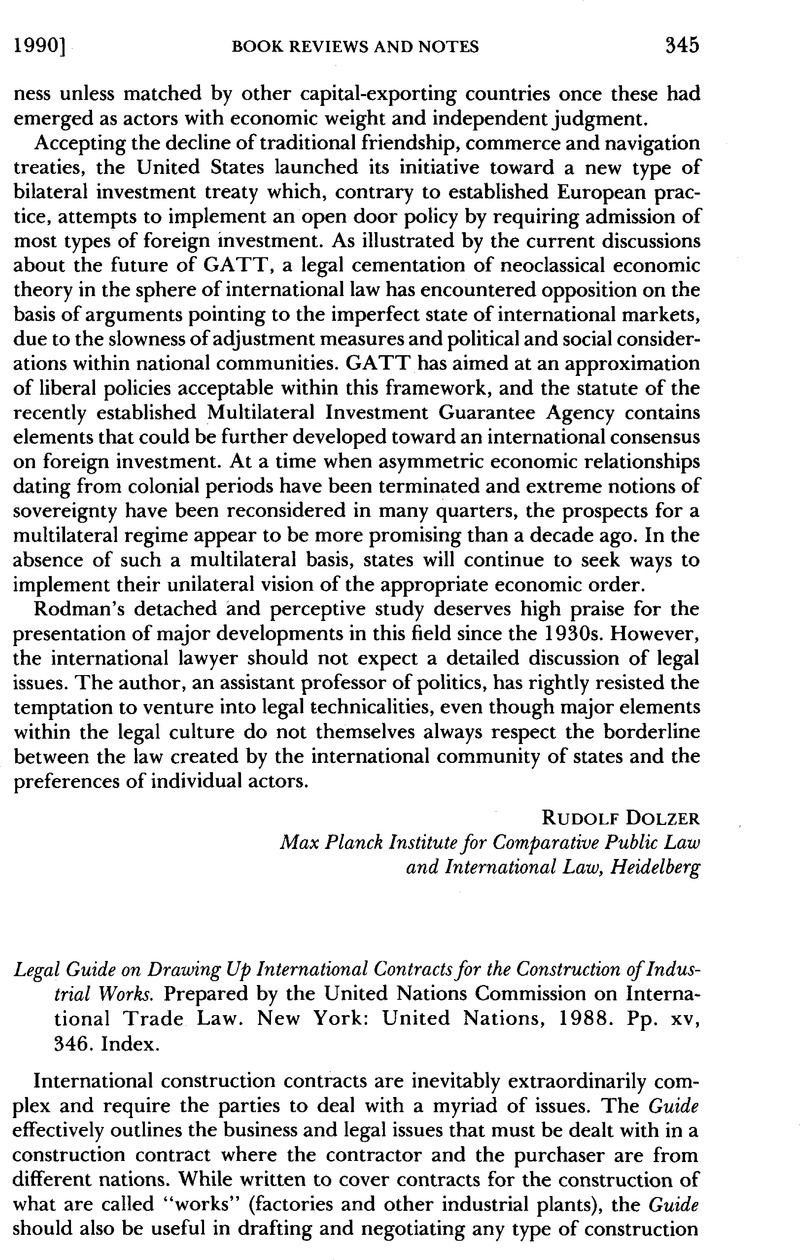No CrossRef data available.
Published online by Cambridge University Press: 27 February 2017

1 The Fédération Internationale des Ingénieurs-Conseils (FIDIC), located in The Hague, has produced Forms of Agreement and complementary Conditions of Contract (International) for Works of Civil Engineering Construction that are used throughout the world on construction projects.
2 The price and payment chapter of the Guide is particularly valuable. It discusses the types of contracts that may be used, including lump sum, cost-type and unit price contracts. Possible price revision provisions to deal with inflation and other variables are considered, as are currency exchange problems.
3 The security discussion includes provisions for guarantees of performance by the contractor and for guarantee of payment by the purchaser.
4 The Guide contains two chapters on excusability. One sets forth force majeure or excusable delay provisions. This discussion includes not only provisions for excusing the contractor for delays caused by uncontrollable circumstances such as unusual weather, governmental action, war or strikes, but also provisions excusing purchaser performance. Such provisions could result in a contractor’s not being paid for work performed and seem out of line with normal practice and the general evenhandedness of the Guide. A second chapter deals with hardship clauses providing relief to either party where circumstances make its bargain unreasonable or unacceptable. Such provisions, too, would seem difficult for contractors to accept to the extent that they would affect payment for work done.
5 Discussions of terminations include those for default and those for the purchaser’s convenience, as well as termination by the contractor in the event of nonpayment.
6 Purchasers worry about constructive change provisions that can lead to unintended price increases. Contractors often do not like to be forced to do work that they do not regard as required, especially when there may be some question about the purchaser’s ability to pay if the contractor is found to be correct that there was a change.